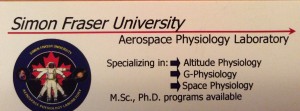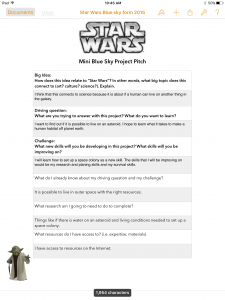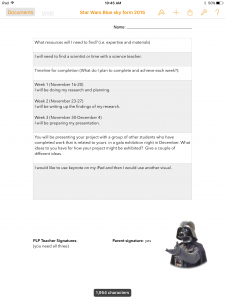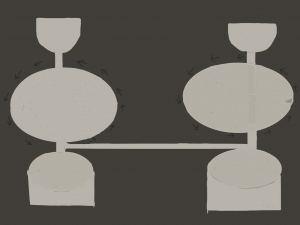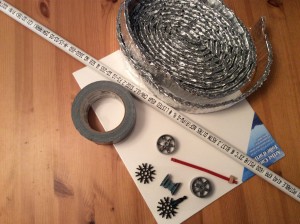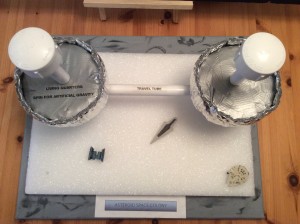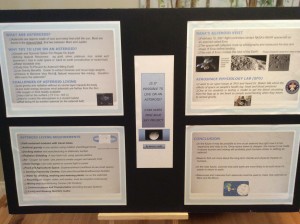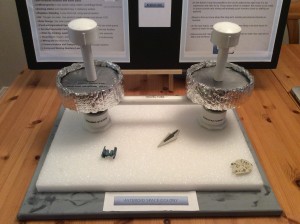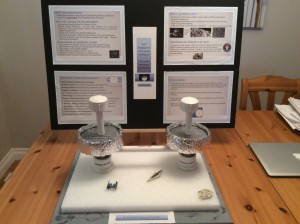My Question: Is it possible to live on an asteroid like in Star Wars?
Planning My Project:
I filled out the Pitch Form (see below) to start planning what research I should do and where to do it. I needed to find out what living conditions are like on an asteroid and what humans need to live. I did research on the internet and found that NASA had a lot of information. I also went to SFU’s Aerospace Physiology Lab and heard Dr. Blaber talk about the effects of space on people’s health and how they are trying to address the impacts of low gravity on people.
Here are my research findings that helped me plan my model and answer the driving question:
What are asteroids?
- Asteroids are objects made of rock and metal that orbit the sun. Most are found in the Asteroid Belt that lies between Mars and Jupiter.
Why try to live on an asteroid?
- Growth and survival option for the earth’s growing population
- Lots of valuable minerals could be mined to use in outer space or back on earth
- Water is available from the ice on asteroids
- Could study how to prevent an asteroid from hitting earth
- There are low gravity benefits. It is easier to mine and move large objects for manufacturing.
- Offers a chance to become very rich from mining. Raises question: who owns the asteroids?
Challenges of asteroid living?
- Low gravity and radiation impacts health like the heart and blood circulation
- Less solar energy
- No oxygen or food readily available
- Very cold (-73C to -143C)
- Hard to control the atmosphere in a closed habitat
- More likely to be hit by another asteroid in the asteroid belt
What are the human requirements if living on an asteroid?
- Self contained modules with travel tubes
- Artificial gravity in one section using rotation (centrifugal force)
- Stationary sections for docking and manufacturing
- Radiation shields using special plastics and a thick hull
- Oxygen. Could use plants to produce oxygen (absorb CO2) or extract from ice water (H2O)
- Solar energy. Use solar panels to convert light to power.
- Food and Farming Space. Soybeans and wheat (nutritious and use small space)
- Service-Community Centres. Education, Social, Medical, Exercise
- Water for drinking, washing and plants. Use ice water on asteroid
- Recycling of all oxygen, water and wastes
- Mining and manufacturing centres. Use 3D Printers
- Communications and Transportation including an escape system
- Living and Working Quarters (Lab)
Construction Process:
Based on my research I started drawing an asteroid space colony in Paper53 to help plan my construction:
- It shows two self-contained modules with a travel tube between them.
- The round sections rotate to create artificial gravity (centrifugal force). You would walk on the sides of the inner walls.
- It is based on the Stanford Torus design that looks like a donut.
- The non-moving parts have the docking station and manufacturing (3D printers)
Here are my project materials:
- thick plastic (radiation protection) piping and connectors for the bases, docking stations and travel tubes
- toilet seals covered in duct tape for the round, rotating sections
- Knex parts to go inside the pipes to help with holding the pipes up and the rotation
- shiny insulation strips for solar energy panels
- a platform made from foam and a paint canvas.
The pipes fit well into the connectors and I used a lot of hot gun glue to hold it together. The hardest part was making one section rotate for artificial gravity while the attached sections didn’t move. I used very small Star Wars spacecraft beside it to show the large scale of the colony. I labelled the parts so people knew what they were and how they worked.
Final Project:
I put together a display board with slides on it as a backdrop to the model so everyone walking by could read my research findings and see the answer to the question “Is it possible to live on an asteroid like in Star Wars?’ I added references to the back. The slides had information on the following:
- What are asteroids?
- Why try to live on an asteroid?
- Challenges of asteroid living
- NASA’s asteroid visit of 2001
- SFU Physiology Labe
- Answer to the question: Is it possible to live on an asteroid?
The moment you’ve been waiting for….drumroll please…..here is my answer:
- In the future it may be possible to live on an asteroid but right now it is too expensive and risky to try. Scientists need to find out more about the long-term mental and physical impacts on humans. They need to do more studies like SFU does. Once space travel is cheaper, the money to be made in space tourism and mining will probably push humans closer to settling an asteroid. NASA has already sent an unmanned spacecraft to an asteroid so we are getting closer
I met my goal of learning how to set up a space colony and improved my research and planning skills. I also learned things like:
- The benefits of settling an asteroid and that they have minerals and ice water
- The challenges of asteroid living (radiation, cold, low gravity)
- What humans need to survive and what would be needed for asteroid living
- How to set up a space colony
- How to create artificial gravity (centrifugal force)
- How scientists are studying the impacts of low gravity like SFU does
- NASA’s achievements like visiting an asteroid
- We are closer to living on an asteroid than I thought and it is a future possibility.
Exhibition:
Here is what we did for the exhibition night:
- Our group decided to set up our projects in an open area in front of the library door to try and catch people as they entered. I put down paper from the entrance to our area to help guide people our way.
- Our group talked about costumes and I tried different options at home. I ended up dressing in all black to represent Darth Vadar and make it more formal for the exhibition. Someone else brought food for visitors to our group’s area.
- I put a playlist together of Naboo and Star Wars music and brought in my speaker so it could be playing as people entered our area.
When I had visitors to exhibit, the most common question was “Is it possible?” and I was prepared with my answer that it was too risky and expensive right now but possible in the future. I also explained how my space colony worked. Some people were impressed that I had learned about artificial gravity.
The exhibition was a great way to display what I had learned and built and to see all the other projects.
